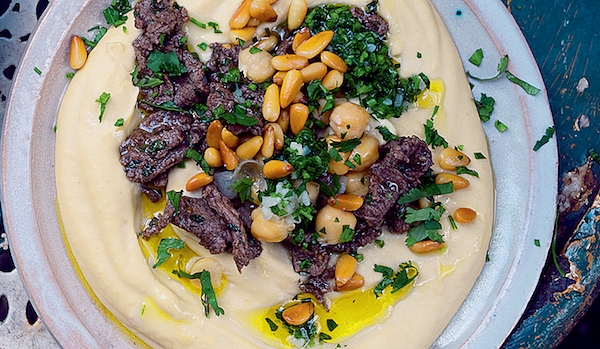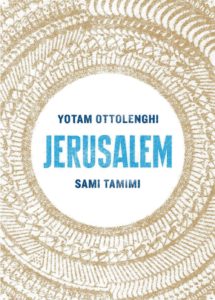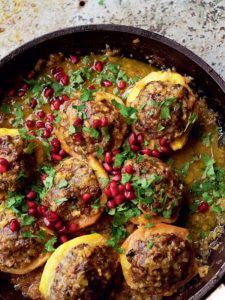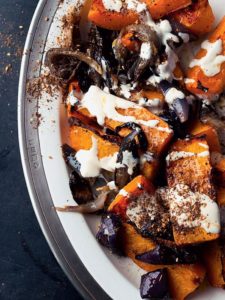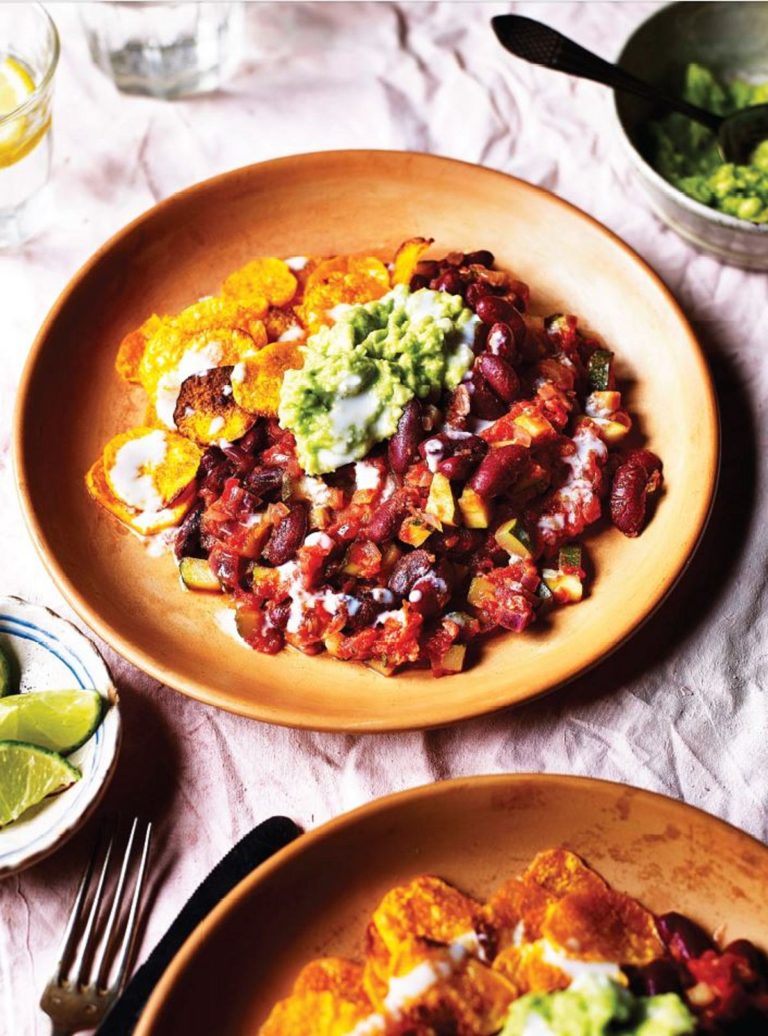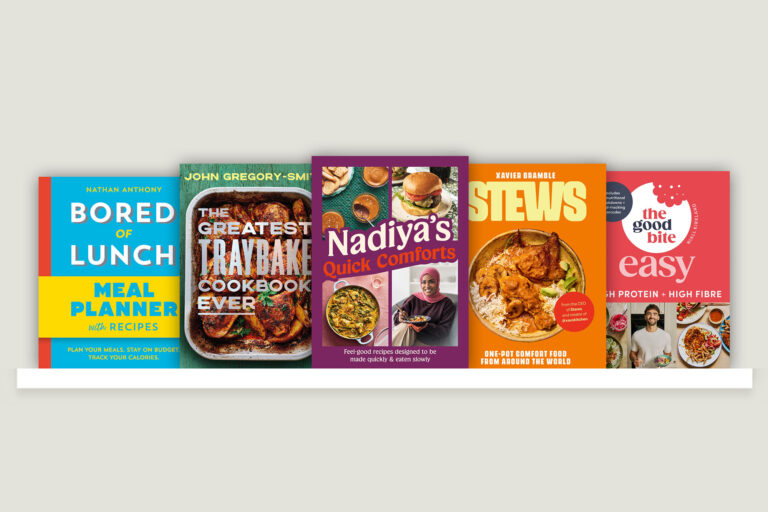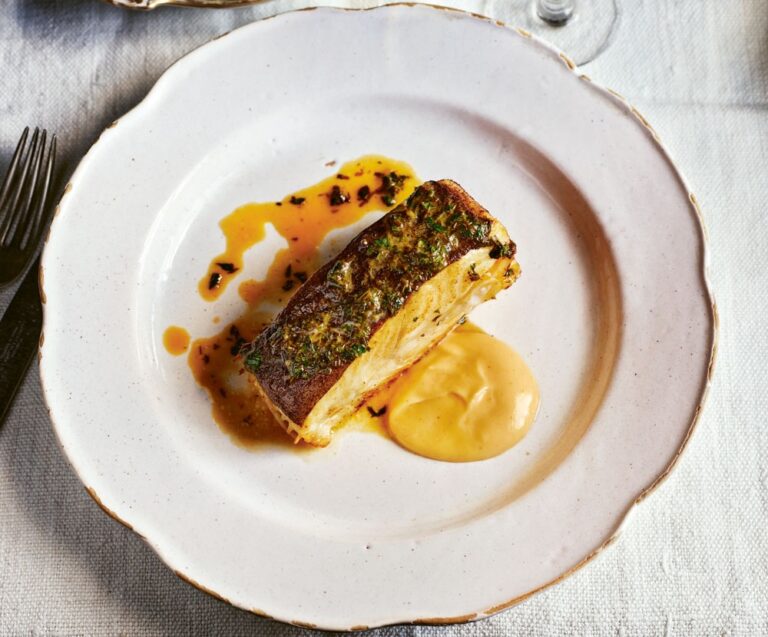Most supermarkets are now stocked with hummus of all flavours, but the smoother Middle Eastern-style of this ever popular dip is still pretty difficult to come by. If it’s the silky, tahini-rich version that you crave rather than the coarser style, there’s only one thing for it: learn to make your own. Though the process does require a little patience and a few different steps, it is more than worth the reward of the butter-soft, extra-smooth hummus you’ll create. Unsurprisingly, there’s one cookbook we return to again and again to inform our hummus-making sessions, and that is Yotam Ottolenghi and Sami Tamimi’s Jerusalem. With several pages dedicated to hummus, it contains the secrets to that super smooth consistency you’re after. Here we share their basic hummus recipe from the book and highlight the essential steps you won’t want to skip.
From the book
Buy From
The secrets to smoother-than-smooth hummus, from Jerusalem
1. Instead of making hummus using tinned chickpeas, opt for dried and soak them overnight. Once soaked, cook them with a teaspoon of bicarbonate of soda and a pinch of patience. The bicarb will help to speed up the cooking process in a fraction of the time, but make sure you wait until the chickpeas are completely soft and fall apart easily with the lightest of pressure.
2. Get yourself some good quality Middle Eastern tahini, which promises the right consistency and texture, and use lots of it. Ottolenghi and Tamimi’s version is rich with the flavourful, silken sesame paste, which gives it a luxurious flavour that’s lacking from shop-bought hummus. We like to use Belazu’s or the Al Arz brand stocked via the Ottolenghi shop.
3. Use iced water. Once you’ve blitzed the chickpeas, tahini, lemon juice and garlic in a food processor, you’ll have a sort of thick paste. At this point, gradually drizzle in iced water until your hummus is smooth and creamy, and you’ve achieved that beautiful light texture that makes this hummus so worth the extra effort.
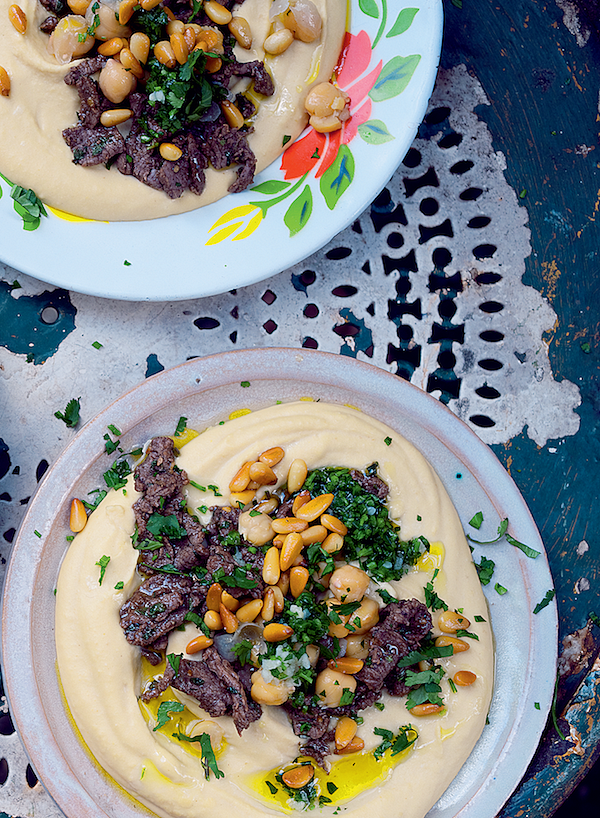
Follow Yotam and Sami’s hummus recipe here:
1. Start a day before by washing the chickpeas well and placing them in a large bowl. Cover them with cold water, at least twice their volume, and leave to soak overnight.
2. The next day, drain the chickpeas. Place a medium saucepan on a high heat and add the drained chickpeas and the bicarbonate of soda. Cook for about 3 minutes, stirring constantly.
3. Add 1.5 litres of fresh water and bring to a boil. Cook, skimming off any foam and any skins that float to the surface. The chickpeas can cook for anywhere between 20 and 40 minutes, depending on the type and freshness, sometimes even longer. Once done, they should be very tender, breaking up easily when pressed between your thumb and finger, almost but not quite mushy.
4. Drain the chickpeas. You should have roughly 600g now.
5. Place the chickpeas in a food processor bowl. Process until you get a stiff paste; then, with the machine still running, add the tahini paste, lemon juice, garlic and 1½ teaspoons of salt.
6. Finally, slowly drizzle in the iced water and allow it to mix until you get a very smooth and creamy paste, about 5 minutes.
7. Transfer the hummus into a bowl, cover the surface with cling film and let it rest for at least 30 minutes. If not using straight away, refrigerate until needed. Make sure to take it out of the fridge at least 30 minutes before serving.
How to serve your hummus
Keep it simple, spread it over a plate, drizzle with olive oil and eat with pita or bread. Or make a meal of it and top with spiced chopped lamb, chickpeas, lemon sauce and pine nuts. “It is a small meal or a starter in a bowl and one of the most sensational things you can put in your mouth”, says Ottolenghi. Find the recipe for Hummus Kawarma here.
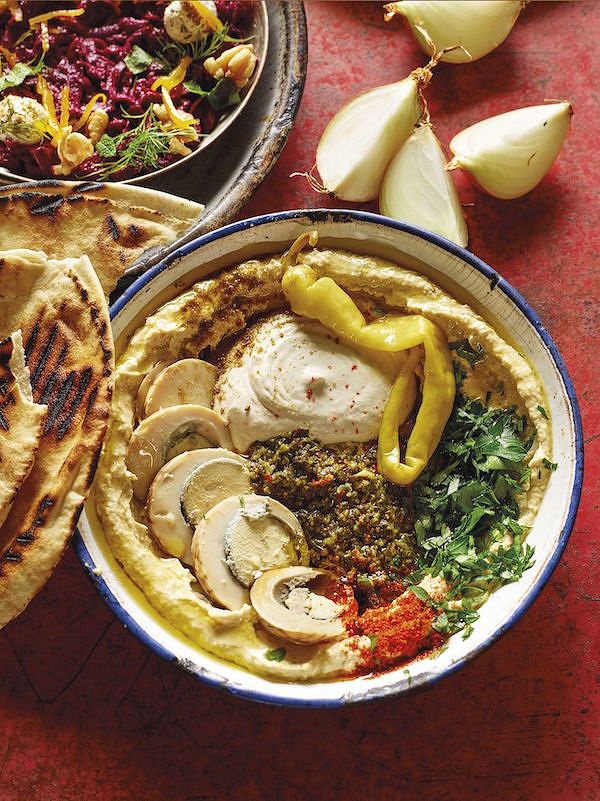
Alternatively, try London’s Berber & Q hummus recipe here, topped with plenty of olive oil, chickpeas, paprika, za’atar, parsley and sliced hard-boiled eggs. Serve with warmed pita and Yemenite sauce.
